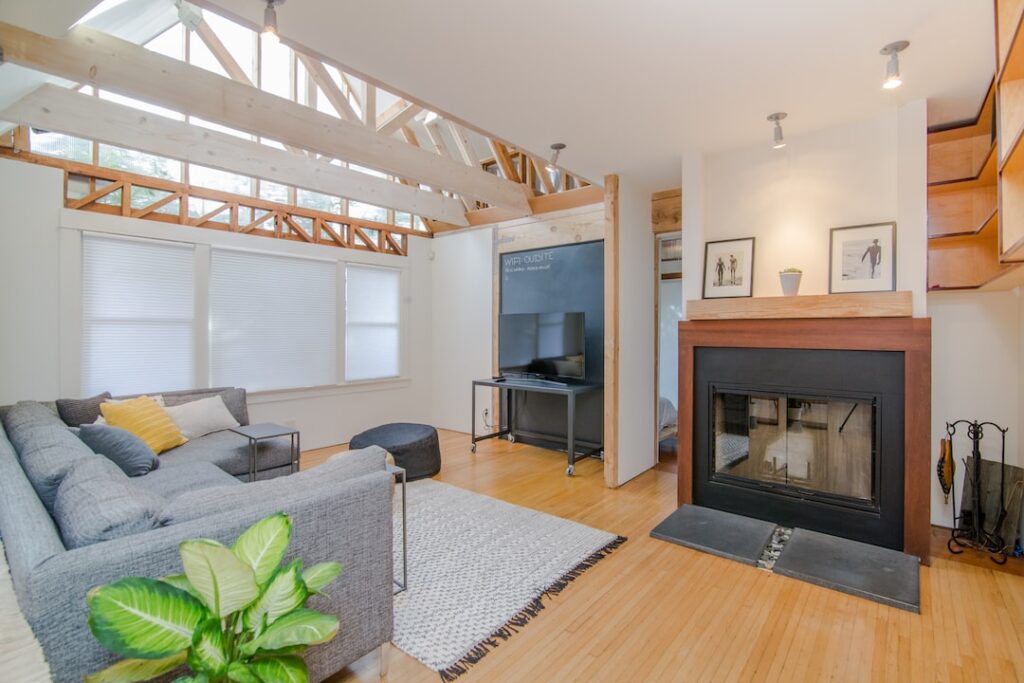Home automation refers to the use of technology to control and automate various household functions and systems. It involves the integration of devices and appliances in a home to create a smart and interconnected environment. The concept of home automation has been around for decades, but it is now gaining popularity as advancements in technology make it more accessible and affordable.
The history of home automation can be traced back to the 1970s when the first automated systems were introduced. These early systems were expensive and complex, making them inaccessible to the average homeowner. However, with the advent of smartphones and wireless technology, home automation has become more user-friendly and affordable.
Home automation is becoming increasingly important in modern living as it offers convenience, comfort, and efficiency. With the ability to control various aspects of a home remotely, homeowners can save time and energy while enjoying a more comfortable living environment.
Key Takeaways
- Home automation is the future of living, offering convenience and comfort.
- Smart homes save time and energy, making daily tasks easier and more efficient.
- Artificial intelligence plays a crucial role in home automation, allowing for personalized experiences.
- Voice-activated assistants are the future of home automation, providing hands-free control.
- Smart lighting enhances mood and ambiance, creating a more comfortable living space.
Smart Homes: A New Era of Convenience and Comfort
Smart homes are a subset of home automation that focuses on creating an intelligent and interconnected living space. In a smart home, various devices and appliances are connected to a central hub or network, allowing homeowners to control them remotely using their smartphones or voice commands.
Smart homes work by using sensors, actuators, and communication technologies to collect data from different devices and make decisions based on that data. For example, a smart thermostat can monitor the temperature in a room and adjust it accordingly to maintain a comfortable environment.
There are numerous examples of smart home devices available on the market today. These include smart thermostats, smart lighting systems, smart locks, smart security cameras, and smart appliances. Each of these devices can be controlled remotely using a smartphone app or voice commands.
The Benefits of Home Automation: Saving Time and Energy
One of the key benefits of home automation is its ability to save time and energy. By automating various tasks and functions in a home, homeowners can free up time for more important activities and reduce their energy consumption.
Energy efficiency is a major advantage of home automation. Smart thermostats, for example, can learn the homeowners’ preferences and adjust the temperature accordingly, resulting in energy savings. Similarly, smart lighting systems can automatically turn off lights when no one is in the room, reducing electricity usage.
In addition to energy savings, home automation also offers time-saving benefits. With the ability to control various devices and appliances remotely, homeowners can automate tasks such as turning on the lights or starting the dishwasher. This not only saves time but also makes daily routines more convenient.
Furthermore, home automation can lead to cost savings. By reducing energy consumption and automating tasks, homeowners can lower their utility bills and maintenance costs. For example, a smart irrigation system can monitor weather conditions and adjust watering schedules accordingly, resulting in water savings and lower water bills.
The Role of Artificial Intelligence in Home Automation
Artificial intelligence (AI) plays a crucial role in home automation by enabling devices and systems to learn and make intelligent decisions. AI refers to the ability of machines to mimic human intelligence and perform tasks that would typically require human intervention.
In home automation, AI is used to analyze data collected from various devices and sensors to make informed decisions. For example, an AI-powered security system can analyze video footage from security cameras to detect suspicious activity and send alerts to the homeowner.
There are numerous examples of AI-powered home automation devices available today. These include virtual assistants such as Amazon Alexa and Google Assistant, which use natural language processing and machine learning algorithms to understand and respond to voice commands.
Voice-Activated Assistants: The Future of Home Automation
Voice-activated assistants are a key component of home automation that allows homeowners to control various devices and systems using voice commands. These assistants use speech recognition technology to understand and respond to spoken instructions.
Voice-activated assistants work by listening for a wake word or phrase, such as “Hey Siri” or “Alexa,” and then processing the subsequent command. They can perform a wide range of tasks, from playing music and answering questions to controlling smart home devices.
Examples of voice-activated assistants in home automation include Amazon Alexa, Google Assistant, and Apple Siri. These assistants can be integrated with various smart home devices, allowing homeowners to control their lights, thermostats, and appliances using voice commands.
Smart Lighting: Enhancing Mood and Ambiance in Your Home
Smart lighting is a popular feature of home automation that allows homeowners to control the lighting in their homes remotely. Smart lighting systems typically consist of LED bulbs that can be dimmed or adjusted in color temperature.
Smart lighting works by connecting LED bulbs to a central hub or network, which can be controlled using a smartphone app or voice commands. Homeowners can create custom lighting scenes for different activities or moods, such as a relaxing ambiance for movie nights or bright lighting for reading.
The benefits of smart lighting in home automation are numerous. Firstly, it allows homeowners to save energy by automatically turning off lights when no one is in the room. Secondly, it enhances the ambiance and mood in a home by allowing homeowners to adjust the lighting according to their preferences.
Security and Surveillance: Keeping Your Home Safe and Secure
Security and surveillance systems are an essential aspect of home automation that helps homeowners keep their homes safe and secure. These systems typically consist of security cameras, motion sensors, and door/window sensors that are connected to a central hub or network.
Security and surveillance systems work by monitoring the surroundings of a home and sending alerts to the homeowner in case of suspicious activity. For example, a security camera can detect motion and send a notification to the homeowner’s smartphone.
The benefits of security and surveillance in home automation are significant. Firstly, they provide homeowners with peace of mind by allowing them to monitor their homes remotely. Secondly, they can deter potential burglars and intruders, as the presence of security cameras can act as a deterrent.
Smart Appliances: Making Household Chores a Breeze
Smart appliances are another key component of home automation that makes household chores more convenient and efficient. These appliances are connected to a central hub or network, allowing homeowners to control them remotely using a smartphone app or voice commands.
Smart appliances work by using sensors and communication technologies to collect data and make intelligent decisions. For example, a smart refrigerator can monitor its contents and send alerts to the homeowner when certain items are running low.
There are numerous examples of smart appliances available today, including smart refrigerators, smart washing machines, and smart ovens. These appliances offer various benefits, such as energy savings, convenience, and improved functionality.
Home Entertainment: The Ultimate Home Theater Experience
Home entertainment systems are a popular feature of home automation that allows homeowners to create the ultimate home theater experience. These systems typically consist of a combination of audio and video devices, such as speakers, televisions, and media players.
Home entertainment systems work by connecting various devices to a central hub or network, which can be controlled using a smartphone app or voice commands. Homeowners can create custom audio and video setups for different rooms or activities, such as watching movies or listening to music.
The benefits of home entertainment in home automation are significant. Firstly, it allows homeowners to enjoy a personalized and immersive entertainment experience in the comfort of their own homes. Secondly, it offers convenience by allowing homeowners to control their audio and video devices remotely.
The Future of Home Automation: Trends and Predictions
The future of home automation looks promising, with emerging trends and advancements in technology shaping the way we live. One of the key trends in home automation is the integration of AI and machine learning algorithms into devices and systems, allowing them to learn and adapt to homeowners’ preferences.
Another trend in home automation is the increased use of voice-activated assistants and natural language processing technology. As these assistants become more advanced, they will be able to understand and respond to more complex commands, making home automation even more convenient.
Furthermore, the future of home automation will see the development of more advanced and sophisticated devices and systems. For example, smart homes may incorporate biometric authentication technology, allowing homeowners to unlock doors or access certain areas using their fingerprints or facial recognition.
In conclusion, home automation is the future of living, offering convenience, comfort, and efficiency. With advancements in technology and the increasing popularity of smart homes, homeowners can enjoy a more connected and intelligent living environment. From energy savings and time-saving benefits to enhanced security and entertainment, home automation has the potential to transform the way we live.
FAQs
What is home automation?
Home automation refers to the use of technology to control and automate various household appliances and systems, such as lighting, heating, ventilation, air conditioning, security, and entertainment.
What are the benefits of home automation?
Home automation offers several benefits, including increased convenience, improved energy efficiency, enhanced security, and greater comfort. It can also save time and money by automating routine tasks and reducing energy consumption.
What are some examples of home automation devices?
Some examples of home automation devices include smart thermostats, smart lighting systems, smart locks, smart security cameras, smart speakers, and smart home hubs.
How does home automation work?
Home automation systems typically use a combination of sensors, controllers, and actuators to monitor and control various household appliances and systems. These devices are connected to a central hub or network, which can be controlled using a smartphone app, voice commands, or a remote control.
What are some of the latest innovations in home automation?
Some of the latest innovations in home automation include the use of artificial intelligence and machine learning to improve automation and personalization, the integration of voice assistants like Amazon Alexa and Google Assistant, and the development of smart home ecosystems that allow different devices to work together seamlessly.
Is home automation expensive?
The cost of home automation varies depending on the type and number of devices you choose, as well as the complexity of the system. However, many home automation devices are now more affordable than ever, and can often pay for themselves over time through energy savings and increased efficiency.









